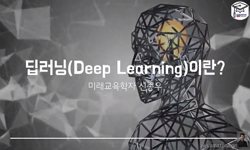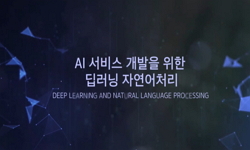This article proposes a subject-independent application of brain–computer interfacing (BCI). A 32-channel Electroencephalography (EEG) device is used to measure imagined speech (SI) of four words (sos, stop, medicine, washroom) and one phrase (come-...
http://chineseinput.net/에서 pinyin(병음)방식으로 중국어를 변환할 수 있습니다.
변환된 중국어를 복사하여 사용하시면 됩니다.
- 中文 을 입력하시려면 zhongwen을 입력하시고 space를누르시면됩니다.
- 北京 을 입력하시려면 beijing을 입력하시고 space를 누르시면 됩니다.




Electroencephalography-based imagined speech recognition using deep long short-term memory network
한글로보기https://www.riss.kr/link?id=A108226809
-
저자
Prabhakar Agarwal (National Institute of Technology Delhi) ; Sandeep Kumar (National Institute of Technology Delhi)

- 발행기관
- 학술지명
- 권호사항
-
발행연도
2022
-
작성언어
English
- 주제어
-
등재정보
KCI등재,SCI,SCIE,SCOPUS
-
자료형태
학술저널
- 발행기관 URL
-
수록면
672-685(14쪽)
-
KCI 피인용횟수
0
- DOI식별코드
- 제공처
- 소장기관
-
0
상세조회 -
0
다운로드
부가정보
다국어 초록 (Multilingual Abstract)
This article proposes a subject-independent application of brain–computer interfacing (BCI). A 32-channel Electroencephalography (EEG) device is used to measure imagined speech (SI) of four words (sos, stop, medicine, washroom) and one phrase (come-here) across 13 subjects. A deep long short-term memory (LSTM) network has been adopted to recognize the above signals in seven EEG frequency bands individually in nine major regions of the brain. The results show a maximum accuracy of 73.56% and a network prediction time (NPT) of 0.14 s which are superior to other state-of-the-art techniques in the literature. Our analysis reveals that the alpha band can recognize SI better than other EEG frequencies. To reinforce our findings, the above work has been compared by models based on the gated recurrent unit (GRU), convolutional neural network (CNN), and six conventional classifiers. The results show that the LSTM model has 46.86% more average accuracy in the alpha band and 74.54% less average NPT than CNN. The maximum accuracy of GRU was 8.34% less than the LSTM network. Deep networks performed better than traditional classifiers.
참고문헌 (Reference)
1 K. Khanna, "“The locked-in syn drome”: Can it be unlocked?" 2 (2): 96-99, 2011
2 S. Martin, "Word pair classification during imagined speech using direct brain recordings" 6 : 25803-, 2016
3 X. Glorot, "Understanding the difficulty of training deep feedforward neural networks" 249-256, 2010
4 P. Agarwal, "Transforming imagined thoughts into speech using a covariance-based subset selection method" 59 (59): 180-183, 2021
5 G. H. Klem, "The ten twenty electrode system of the international federation. The international federation of clinical neurophysiology" 52 : 3-6, 1999
6 E. F. González-Castañeda, "Sonification and textification:Proposing methods for classifying unspoken words from EEG signals" 37 : 82-91, 2017
7 C. S. Dasalla, "Single-trial classification of vowel speech imagery using common spatial patterns" 22 (22): 1334-1339, 2009
8 P. Agarwal, "Silent speech classification based upon various feature extraction methods" 16-20, 2020
9 Sandeep Kumar, "Real‐time implementation and performance evaluation of speech classifiers in speech analysis‐synthesis" 한국전자통신연구원 43 (43): 82-94, 2021
10 J. Hazarika, "Neural modulation in action video game players during inhibitory control function: An EEG study using discrete wavelet transform" 45 : 144-150, 2018
1 K. Khanna, "“The locked-in syn drome”: Can it be unlocked?" 2 (2): 96-99, 2011
2 S. Martin, "Word pair classification during imagined speech using direct brain recordings" 6 : 25803-, 2016
3 X. Glorot, "Understanding the difficulty of training deep feedforward neural networks" 249-256, 2010
4 P. Agarwal, "Transforming imagined thoughts into speech using a covariance-based subset selection method" 59 (59): 180-183, 2021
5 G. H. Klem, "The ten twenty electrode system of the international federation. The international federation of clinical neurophysiology" 52 : 3-6, 1999
6 E. F. González-Castañeda, "Sonification and textification:Proposing methods for classifying unspoken words from EEG signals" 37 : 82-91, 2017
7 C. S. Dasalla, "Single-trial classification of vowel speech imagery using common spatial patterns" 22 (22): 1334-1339, 2009
8 P. Agarwal, "Silent speech classification based upon various feature extraction methods" 16-20, 2020
9 Sandeep Kumar, "Real‐time implementation and performance evaluation of speech classifiers in speech analysis‐synthesis" 한국전자통신연구원 43 (43): 82-94, 2021
10 J. Hazarika, "Neural modulation in action video game players during inhibitory control function: An EEG study using discrete wavelet transform" 45 : 144-150, 2018
11 Dipti Pawar ; Sudhir Dhage, "Multiclass covert speech classifi cation using extreme learning machine" 대한의용생체공학회 10 (10): 217-226, 2020
12 M. N. I. Qureshi, "Multiclass classification of word imagination speech with hybrid connectivity features" 65 (65): 2168-2177, 2018
13 S. Hochreiter, "Long Short-Term Memory" 9 (9): 1735-1789, 1997
14 C. H. Nguyen, "Inferring imagined speech using EEG signals: A new approach using Riemannian manifold features" 15 (15): 016002-, 2017
15 A. A. Torres-García, "Implementing a fuzzy inference system in a multi-objective EEG channel selection model for imagined speech classification" 59 : 1-12, 2016
16 K. Brigham, "Imagined speech classification with EEG signals for silent communication: A preliminary investigation into synthetic telepathy" 1-4, 2010
17 M. D’Zamura, "Human-computer interaction. New trends Vol. 5610" Springer 40-48, 2009
18 P. Saha, "Hierarchical deep feature learning for decoding imagined speech from EEG" 10019-10020, 2019
19 T. K. Reddy, "HJB-equation-based optimal learning scheme for neural networks with applications in brain-computer interface" 4 (4): 159-170, 2020
20 J. M. Lilly, "Generalized Morse wavelets as a superfamily of analytic wavelets" 60 (60): 6036-6041, 2012
21 S. Wellington, "Fourteen-channel EEG with Imagined Speech (FEIS) dataset, v1.0" University of Edinburgh 3554128-, 2019
22 C. Ju, "Federated transfer learning for EEG signal classification" 3040-3045, 2020
23 A. M. Saxe, "Exact solutions to the nonlinear dynamics of learning in deep linear neural networks" 2013
24 P. Kumar, "Envisioned speech recognition using EEG sensors" 22 : 185-199, 2018
25 Prabhakar Agarwal, "Electroencephalography based imagined alphabets classification using spatial and time‐domain features" Wiley 32 (32): 111-122, 2021
26 A. Porbadnigk, "EEG-based speech recognition- impact of temporal effects" 376-381, 2009
27 P. Kaushik, "EEG-based age and gender prediction using deep BLSTM-LSTM network model" 19 (19): 2634-2641, 2019
28 S. Siuly, "EEG signal analysis and classification: Techniques and applications" Springer 2016
29 P. Saha, "Deep learning the EEG manifold for phonological categorization from active thoughts" 2762-2766, 2019
30 S. Kellis, "Decoding spoken words using local field potentials recorded from the cortical surface" 7 (7): 056007-, 2010
31 D. Dash, "Decoding imagined and spoken phrases from non-invasive neural (MEG) signals" 14 : 290-, 2020
32 L. Marple, "Computing the discrete-time “analytic” signal via FFT" 47 (47): 2600-2603, 1999
33 S. Zhao, "Classifying phonological categories in imagined and articulated speech" 992-996, 2015
34 M.-O. Tamm, "Classification of vowels from imagined speech with convolutional neural networks" 9 (9): 46-, 2020
35 E. T. Esfahani, "Classification of primitive shapes using brain-computer interfaces" 44 (44): 1011-1019, 2012
36 C. Cooney, "Classification of imagined spoken word-pairs using convolutional neural networks" 338-343, 2019
37 P. Kant, "CWT based transfer learning for motor imagery classification for brain computer interfaces" 345 : 108886-, 2020
38 R. A. Ramadan, "Brain computer interface:Control signals review" 223 : 26-44, 2017
39 이미란 ; 류재환 ; 김덕환, "Automated epileptic seizure waveform detection method based on the feature of the mean slope of wavelet coefficient counts using a hidden Markov model and EEG signals" 한국전자통신연구원 42 (42): 217-229, 2020
40 A. M. Choudhari, "An electrooculography based human machine interface for wheelchair control," 39 (39): 673-685, 2019
41 O. Özdenizci, "Adversarial deep learning in EEG biometrics" 26 (26): 710-714, 2019
42 W. He, "A wireless BCI and BMI system for wearable robots" 46 (46): 936-946, 2016
43 A. Khosla, "A comparative analysis of signal processing and classification methods for different applications based on EEG signals" 40 (40): 649-690, 2020
44 Sandeep Kumar, "A CNN based graphical user interface controlled by imagined movements" Springer Science and Business Media LLC 2021
45 Ki-Hong Kim ; Hong Kee Kim ; Jong-Sung Kim ; Wookho Son ; 이수영, "A Biosignal-Based Human Interface Controlling a Power-Wheelchair for People with Motor Disabilities" 한국전자통신연구원 28 (28): 111-114, 2006
동일학술지(권/호) 다른 논문
-
- 한국전자통신연구원
- 정민기
- 2022
- KCI등재,SCI,SCIE,SCOPUS
-
Crosstalk reduction in tabletop multiview display with fog screen
- 한국전자통신연구원
- 전호성
- 2022
- KCI등재,SCI,SCIE,SCOPUS
-
- 한국전자통신연구원
- Ebrahim Salary
- 2022
- KCI등재,SCI,SCIE,SCOPUS
-
Comparison of two methodologies on spectrum sharing information for unlicensed use in the 6-GHz band
- 한국전자통신연구원
- 엄중선
- 2022
- KCI등재,SCI,SCIE,SCOPUS
분석정보
인용정보 인용지수 설명보기
학술지 이력
| 연월일 | 이력구분 | 이력상세 | 등재구분 |
|---|---|---|---|
| 2023 | 평가예정 | 해외DB학술지평가 신청대상 (해외등재 학술지 평가) | |
| 2020-01-01 | 평가 | 등재학술지 유지 (해외등재 학술지 평가) |  |
| 2005-09-27 | 학술지등록 | 한글명 : ETRI Journal외국어명 : ETRI Journal |  |
| 2003-01-01 | 평가 | SCI 등재 (신규평가) |  |
학술지 인용정보
| 기준연도 | WOS-KCI 통합IF(2년) | KCIF(2년) | KCIF(3년) |
|---|---|---|---|
| 2016 | 0.78 | 0.28 | 0.57 |
| KCIF(4년) | KCIF(5년) | 중심성지수(3년) | 즉시성지수 |
| 0.47 | 0.42 | 0.4 | 0.06 |




 ScienceON
ScienceON







